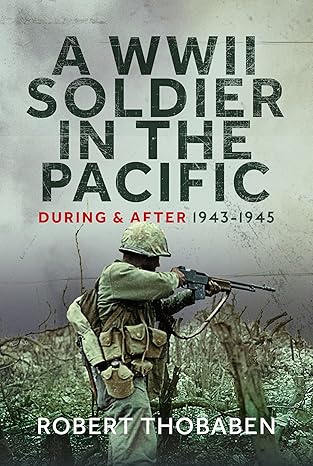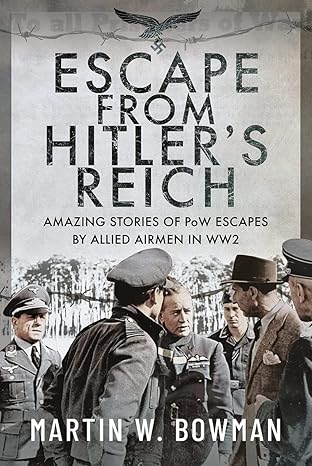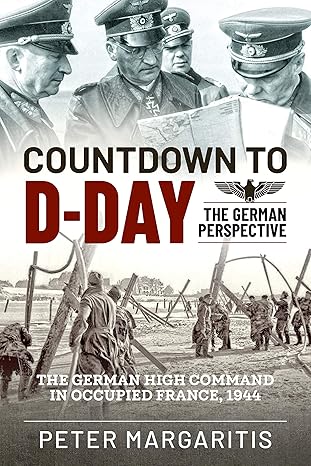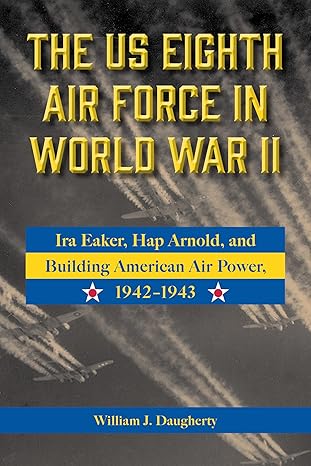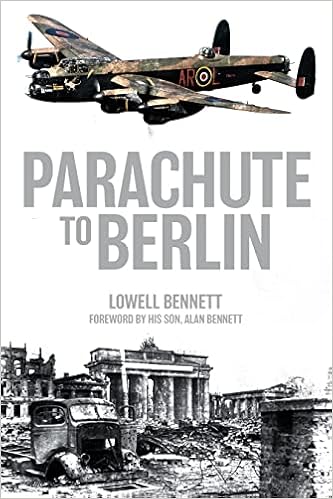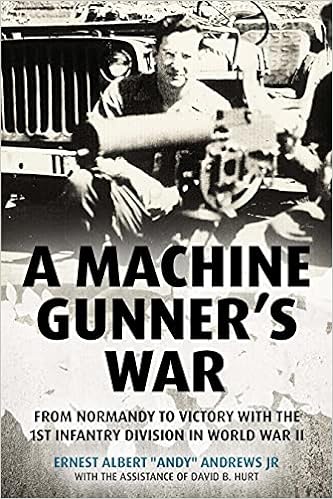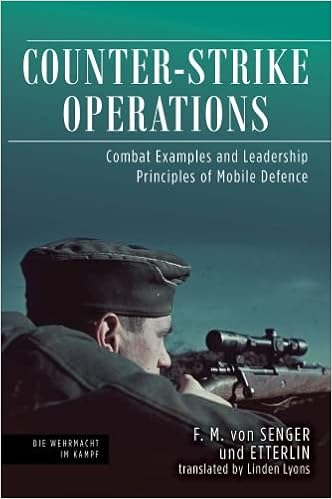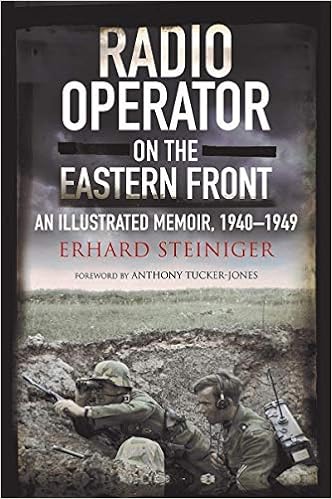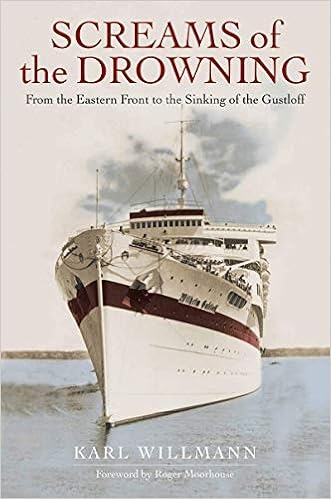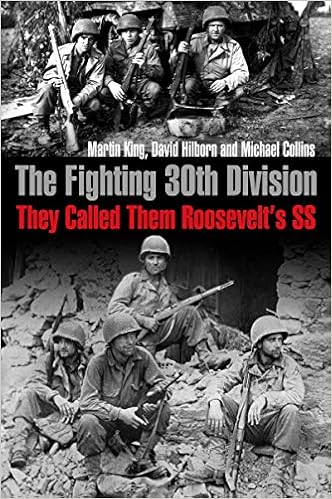Flying Tiger, Hidden Eagle
By Christopher Lyon
It was December of 1939, and the world was at war. Poland, Czechoslovakia, France, Italy, China, Great Britain, Russia and Japan all had seats at the highest stakes game the world had ever seen, but the United States was quite noticeably absent. Many historians have argued that Franklin Roosevelt did his utmost to propel the country into conflict with Germany and Japan, and when viewed through the lens of the Chinese conflict, this controversy is accentuated and brought to the fore. Although it would be two full years before the catastrophe at Pearl Harbor, it was in this critical month, when all Europe was falling under the sway of fascism, that the Roosevelt administration, and especially the president himself, was preparing for the coming storm. By mid-1940, the US was preparing to boost its support of the hard-pressed Chinese troops with a very significant number of advanced fighters, bombers, and hundreds of millions of dollars in aid.[1] For years the Chinese, who had been fighting both the Japanese and been embroiled in their own civil war, had faced the technological might of Japan armed only with planes from WWI and infantry weapons that often pre-dated even that conflict. A US colonel, Claire Chennault, who had been an advisor to the Chinese military since 1937, oversaw the creation of the American Volunteer Group, a unit of US servicemen and pilots who volunteered to serve in the Chinese military in late 1940 and early 1941. Although the squadron was designed to support the Chinese military, and they volunteered to serve at a time when the US was not at war (some of them a full year before Pearl Harbor), the unit first saw action only after the United States itself went to war with Japan. The ‘Flying Tigers’ as they came to be known, although serving for only seven months as an active combat unit, remain as the most deadly fighter squadron in US history, losing 10 pilots on combat missions while shooting down 299 enemy aircraft and damaging a further 150.[2]
This essay however, is not just about the statistics, the battles, or even the just the war in China; it is about the men. It is about who they were and why they were there. First and foremost, why they thought they should cross the world to begin with, and what it was about for them by July of 1942, when the unit was subsumed back into the regular US forces. Second of all, this paper will discuss why the US government sent them there, and what they hoped to accomplish, both prior to Dec. 1941 and throughout early 1942. Furthermore it will set this often-told yet almost never understood drama against the backdrop of cultural and diplomatic interactions between the US and China, specifically, the idealized frontier vision of manifest destiny that Henry Luce once projected on the West of the East and image that Chiang Kai-Shek and others reciprocated of the West upon the East that made this co-operation possible. The American Volunteer Group (AVG) was in fact the culmination of a long relationship between nations, and was even more directly the product of cultural exports such as missionaries, ideologies, and technology. Without the obvious benefits of western technology, Chiang might never have sought U.S. aid. The men of the Flying Tigers became, for two nations, a symbol of victory and resistance against the Japanese onslaught in a time of otherwise utter defeat. This forgotten conflict was a war of many fronts, of ideals, propaganda, diplomacy, realpolitik, and for the men of the jing ciao, a very real-and very bloody-war indeed.[3]
The American view of China was shaped by primarily by two very influential and disparate personalities. The first of these is discussed in Shizang Hu’s Stanley K. Hornbeck and the Open Door Policy, 1919-1937 , a biography and analysis of the man who became the Roosevelt administration’s Far East advisor during the war. Hornbeck, who began his career as a professor at the University of Wisconsin, spent many years in China as an economic advisor to “Vinegar Joe” Stillwell, the American ambassador to China. His attitudes, although decidedly pro-Chinese, were also initially patronizing and paternalistic in the extreme, and aid the reader and researcher in understanding the American mindset during the 1920’s.
Probably the most influential individual (as far as China was concerned) for the average citizen during the 1930’s thru the 1950’s was Henry Luce, the co-founder, owner and editor-in-chief of Time, Inc. His personal stake in the future of China and his friendship with the Chinese Nationalist leader Chiang Kai-Shek shaped his nationally syndicated news magazine and his even more widely viewed newsreels, “The March of Time”, which were played before films in theaters across America and Europe for decades. These issues and their origins are addressed in Christopher Jesperson’s American Images of China, 1931-1949.
The number of volumes covering the Pacific Front of WWII could fill libraries on their own; but for an overall picture of the role of the AVG in war in China, two books stand out: Duane P. Schultz’s The Maverick War: Chennault And The Flying Tigers and Maochun Yu’s Dragon’s War: Allied Operations and the Fate of China, 1937-1947. The Schultz book is an in-depth discussion of the AVG and its history, from its inception to the creation of the 14th Air Force in July of 1942. The Yu volume contains a wealth of information on other services operating in China, such as the Soviets pilots and the British commandos, as well as a chapter devoted to the “flying tigers with sharks teeth”.
It goes without saying that the primary sources for the accounts of the war itself are those of the men who fought it. Among these are the personal diary of Robert Smith, a radio operator with the AVG and later an officer with the 14th Air Force, who published his memoirs under the title With Chennault in China: A Flying Tiger’s Diary . The taped observations of Wisconsin veterans Fritz Wolf and Rode Rodewald are invaluable as well. It is the perspectives of these men, the windows provided by their diaries, commentary, letters, and interviews that allow the historian the extreme privilege of viewing, to borrow Mrs. Tuchman’s now overused phrase, through a distant mirror the events of decades long gone by. While of course these accounts contain the bias of an American pilot, the concern of this essay is not to write an un-biased account of the air war over South China and Burma; it is to determine the value of that war to the men involved and to the world at large, and thus the personal opinions of the men are of infinite value.
It would be impossible to understand China, or to understand America’s involvement in it, without understanding how the one viewed the other. And to do so one has to review the situation in which China and the U.S. found themselves during the half-century leading up to the Second World War. Far too often the imperial exchange is viewed as one-way, narrow, and controlled, a highway robbery of resources and the artificial insemination of a foreign culture that is left to mature in the fertile soil of the victimized country in question. However true this may or may not have been the United States’ other imperial enterprises, China represented an entirely different kettle of tea. The infamous isolationism of the Orient that had driven the Chinese to reject Western culture for so long was based, in large part, on the vision that their culture was superior to all others. This cultural arrogance, referred to as the “Middle Kingdom” syndrome, although in theory similar to the imperial drive of ‘the West’, was in practice very grating on European and Anglo-American nerves. After all, it was the West that had conquered and “discovered” the East, not vice versa. Chinese adherence to ancient practices and clinging to its glorious yet distant past was keeping it from entering the modern era and becoming a powerful ally to America and Great Britain.[4]
This is not to say that the same themes were not present in China as were observable in the less developed countries that the U.S. showed an interest in. Missionaries had been present in China since the early 17th century when the Jesuits first evangelized in the south, but it was the fervent Protestants of North America that truly set out to conquer the Orient. One such was Henry W. Luce, whose wife gave birth to Henry R. while stationed in China. That Henry became the editor of Time, and it was his vision, perhaps more than anyone else’s, that literally shaped how America and the rest of the West saw China in the 1930’s and 40’s. Henry the Younger spent many of his formative years in a compound in “Tengchow” [sic] (Tsingtao); in fact he never even saw the States until he was fourteen. Luce received the best education, graduating from prep school and then from Yale (where he was a member of the infamous Skull and Bones). His attitude, and perhaps that of other members of his generation, may be divined by the letters from his father and by comments and self-critiques Luce himself made later in life.
Henry W. saw in China a chance to remake the Puritan ideal; just as their Protestant forbears had left Europe in disgust at its overtly Catholic traditions in search of virgin soil, so Henry Winters Luce sought out China as a territory in which to make Christianity new again. He told Henry R. once that “Europe…has ceased to be Christian” . In a letter to a friend he indicated that “This is …great country…one feels like renewing his grip on God about every five minutes.”[6]
Luce described the view his parents gave him of America, and Americans, as a child, thus:
| I had no experience of evil in terms of Americans…Put along with that [the] idea that America was a wonderful country, with opportunity and freedom and justice for all, and you get not only and idealistic, but a romantic view – a profoundly false romantic view.” [7] |
As cultural diplomats missionaries are of course among the most optimistic, but one can imagine the image projected on the Chinese by the fervent servants of the Risen Lord, who also happened to be ardent patriots.
One of the more unfortunate side-effects of the dominance of western civilization is the intellectual and technological arrogance that so often accompanies it. As will be demonstrated later, this would cause Chennault, his pilots, but most especially his Chinese patrons, much grief. But for the present the focus is on the “racist” tones this created in the dialogues between East and West. The term racist, however, is so terribly overused and so dreadfully misunderstood, that for the purposes of this essay we shall use another: culturalist. That is, “my culture is better than yours, therefore you are inferior”, which seems to sum up the situation much better .[8] The rejection of the term racist is not here a denial of the existence of racism, for it undoubtedly did exist; but when it comes to dealing with the more ancient and established cultures of Asia and the Middle East, a different paradigm is required.
In the America of the late 19th century and early 20th centuries, political, historical and even scientific legitimacy was tied by pseudo-science to Anglo-Saxon (or Teutonic), and hence Anglo-American, genetic strings, all bound up in Protestant wrappings. The complete cultural and imperial dominance of Great Britain and the United States, as well as the intellectual achievements of German and French scientists and scholars, seemed to vindicate the notions of “cultural superiority” that Anglo-Americans and the British carried around the world. This ideal when brought to China faced a unique challenge: China had long been recognized as perhaps the oldest civilization in the world bar none (except that of Mesopotamia). Europeans knew this and even in their twisted hierarchy of social evolutionism placed East Asians just below themselves. Practically everything in China predated Europe by centuries, but all of this had somehow stagnated. The rationale for this was, it seemed, obvious: Chinese culture had peaked, like Rome. Its men had become lazy, soft, and effeminate, and needed Western culture, Western influence, and most of all Western religion to set them straight .[9]
There were as many views on the Chinese people as there were Americans with pen and paper. Some, like the shockingly blunt Charles Denby, the American Minister in Peking (1895) voiced the opinion that “the educated Chinaman, who speaks English, becomes a new man; he commences to think.”[10] Stanley Hornbeck, who later became chief of the Far East office in the State Department during the Roosevelt years, came away from his first stay in China with the impression that the characteristics of the Chinese people was typified by “ignorance, credulity, and misinformation”.[11] It does not seem to have struck him that the incident upon which much of this opinion was based had in fact initially duped him as well. However this view did not prevent Hornbeck, like Luce, from seeing China as a land of tremendous potential.
The language used by Luce in his publication of Time and in his incredible pervasive and influential newsreels, The March of Time, was couch in much the same terms as his famous essay on “The American Century”. In an era in which the American future was far from bright, Luce’s vision for America and its place in the world can be seen as simultaneously prophetic and almost naively optimistic; to use the phrase he himself applied, “false[ly] romantic”. That he also foresaw and promoted the “Chinese Century” (which may only now be dawning) puts him and his level of perception on a plane of literary perspicacity populated by precious few. Only his far earthier role as a propagandist draws him back down to the realm of mere mortals.
Drawing on his newly minted news magazine, his contacts in China, and his deeply religious convictions, Henry Luce fused his vision of China as the future of Asia to the rising star of Chiang Kai-Shek, the military genius who in 1927 converted to a Methodist strain of Christianity. In Chiang was everything Luce could hope for: a young, dashing, brilliant officer with a charismatic and charming wife (who also took a very active role in the church and in diplomatic circles) that could unite China and lead it into the modern age. To this end The March of Time began showing pieces that showed the ‘modern skyline of Shanghai’, shots of young Chinese frenziedly shopping in department stores, and illustrating how Chiang’s leadership had forged “a new national fighting spirit” . In fact while American products such as “Eskimo Pies” were making their way east, and western stores were also beginning to come into fashion, the skyline shots had been filmed in Manhattan .[13]
How Chiang, and the Chinese in general, viewed America on the other hand is an entirely different story. Chiang at least saw the U.S. as a means to an end.
| With so much already having been accomplished under his brief rule, the future appeared to hold unlimited promise. In this conce- ption of Sino-American relations the vast geographical distance separating the two nations could no longer hinder the converging trends between them in religion, politics, business, and culture .[14] |
Chiang, for his part channeled his new-found religion into his national ideology, combining western Judeo-Christian rhetoric with the patriotic philosophy of his mentor, the legendary Sun Yat-Sen. This potent cocktail he leveled at the U.S, seeing in its paternalist instincts a chance to find shelter from the storm of war that was descending on China. He wrote and spoke of the Chinese people comparing them to the Israelites, the Chosen People of God, and himself to Jesus, bringing social and religious revolution. To westerners he appealed to their sense of Christian duty towards “weaker peoples” .[15] Simultaneously, he began a program with his wife to reform the morality and social behavior of the Chinese to conform to western standards. This reveals much about Chiang’s character, or at least his priorities; he knew from studying in America how deeply religious the country was. Furthermore, he knew that the way to America’s hearts and minds (and hence it’s military and industrial strength) was through its eyes and ears; and in the 1930’s, his good friend Henry Luce as good as owned those eyes and ears.
From the north and west, via the Soviet-backed Chinese Communist party, Chiang faced Mao Tse-Tung in a civil war that raged on and off until Chiang was finally overthrown in 1949; to the east was the Empire of the Rising Sun and the Japanese army that began nibbling at China in 1931, taking bigger and greedier bites while most of the world ignored the growing conflict. But the situation was even more incredibly complex than a simple three front war. In the early 30’s Chiang was fighting rival warlords for leadership of Nationalist China, the Japanese, and the Communist Party, all of whom were also fighting each other. Yet the Reds also recognized, according to historian Christopher Jesperson, that Chiang was China’s best chance to unite against Japan, so while they would not submit to him, they didn’t want him dead either. Chiang, however, was not as forgiving an opponent. He refused to give up the civil war against Mao even as it drained precious resources from the war in Manchuria and the rest of China, and history has not judged him kindly for it.
In 1937 Captain Claire Chennault was languishing in military limbo. He was everything the Army Air Corps despised; stubborn, rebellious, anti-social, and worst of all, incredibly talented. He didn’t seem to care anything for rank, for after 20 years in the service he only had a captains bars to show for it, when many of his peers had become generals or at least colonels. He wrote a book entitled The Role of Defensive Pursuit , which blasted the Air Corps’ current doctrine of victory via bombardment, ignoring any contributions that fighter planes might make to the overall war effort. A well-armed bomber, so the thinking went, was more than a match for any fighter. In 1937 the “brass” of the Air Corps decided they had had enough, and forcibly retired the recalcitrant Chennault. .[16]
The very book that had caused such consternation in the US had also caught the eye of Madame Chiang, the charismatic and controversial wife of the Generalissimo Chiang Kai-Shek. For six years the Chinese had been completely overmatched in the air, trying to take on the growing might of the Japanese air force, powered primarily by the industrial giant Mitsubishi, with obsolete biplanes and the very cheapest at that. In the newly unemployed Chennault, who was himself an accomplished fighter pilot from WWI, the Chiang’s saw a man who just might change their fortunes in the air war. All three individuals had shown their willingness to break with tradition, to think outside of the box, and in Chennault’s case, often outside of the room in which the box was located. But as progressive and far-sighted as Madame Chiang, the Generalissimo, and Chennault were, the Chinese pilots were not ready for their new commandant .[17]
There was a cultural and personal gulf between the newly frocked Colonel Chennault and his pilots. Although they listened to his tactics and adopted them to great effect, they refused orders to practice formation flying, wing-man coordination, and attacking as a unit rather than the dogmatically taught dueling style left over from WWI. The Chinese saw Chennault's insistence on practice as an insult to their honor and a comment on their lack of skill. In one famous incident, Chennault ordered his recalcitrant squadron commander into the air for drills. Livid, the pilot took off, circled the field, and then deliberately crash-landed his plane, a demonstration as he saw it of what happened when useless practices were demanded .[18]
The Chinese pilots, however, became markedly better pilots under their American commander despite themselves. They achieved successes and victories against the Japanese that had remained elusive for six years. The first time they used Chennault’s single wingman tactics over Nanking in 1937 they shot down 56 Japanese bombers. But their jubilation was short lived, for in 1937 the new Japanese Type 96 fighters, known to history generically as “Zeros” began to be deployed in China. The Chinese planes, which were far slower, far less maneuverable, had lighter armaments and a much shorter range, simply could not compete. Within a few weeks Chennault’s squadron was decimated and grounded due to lack of aircraft.
There were several foreign units operating in support of China at the time. Much of the pilot training and fighters had been (to Chennault’s horror) provided by Italians. The Soviet Union threw a tremendous amount of weight behind the Chinese cause before it had to deal with the Nazi threat to the west.
| …the Soviet Union provided the Chinese with the following items: 900 aircraft, of which 318 were heavy bombers; 1,140 artillery sets; 82 tanks; close to 10,000 machine guns; 50,000 rifles; 2,000 trucks; 2 million hand grenades; 31,160 airborne bombs;2 million shells; 180 million bullets; and other materiel. [19] |
In addition the Russians sent four fighter squadrons and two bomber squadrons to China to support the war effort, but they did not stay long enough to make a difference, leaving in the late summer of 1939 .[20] For two years, China would be all but naked in the skies.
Chennault did not leave when he had no more planes to fly or men to command, however. He remained, observing Japanese tactics and making exhaustive reports on the capabilities of their aircraft that almost no one back in the States bothered to read until after Pearl Harbor, when it was too late. The few who did, dismissed the specifications he gave as “impossible” for an aircraft to achieve. He continued his intelligence gathering at great risk to himself, however; he was one of the last to escape Nanking in the early hours of December 13th 1937, only hours before the city fell .[21]
Finally, at the insistence of Madame Chiang and the Chinese foreign minister, T.V. Soong, as well as Chennault’s few remaining friends in Washington, Chennault returned to the States in late 1940 backed by the full weight of the Chinese government in a desperate attempt to get the planes that he needed. Soong already had an enormous loan of $250 million from the U.S. Treasury in the works .[22] What remained to be seen was what he would be allowed to buy with it. What Chiang wanted, on Chennault’s advice, was 500 planes, most of which were to be fighters. Roosevelt dismissed this out of hand. No such number existed, even if he wanted to sell them he couldn’t. The United States was yet to flex its industrial muscles in war production, and 500 planes was, as FDR pointed out, unthinkable .[23]
The only planes on hand were 100 P40B “Tomahawk” fighters from a New York factory, already somewhat outdated by newer designs in production elsewhere. But these planes were already rubber-stamped for shipment to Great Britain to help in the defense of that country against the Luftwaffe attack waves that were only just subsiding from a peak during the summer months. What happened next was written down primarily in private conversations between the cabinet level ministers of the various countries concerned, or the ambassadors of said nations. Great Britain agreed to a delay in the delivery of its promised planes. China got its 100 fighters. Chennault got his squadron. But most importantly of all, Roosevelt agreed to allow the recruitment of American servicemen as pilots and engineers for the newly formed American Volunteer Group. The bond between America and China strengthened immeasurably, but the nation also moved that much closer to war .[24]
To backtrack to the deal struck by the three nations (which was brokered primarily by Henry Morganthau, T.V. Soong, and Lord Lothian), rarely in the history of geopolitical strategy have events combined in such a way as to bring three disparate powers to such a close agreement so quickly. By 1940, the only land routes by which supplies could reach China was from Singapore via the Burma Road or overland from India, both of which were controlled by the British. The Indian route was extremely vulnerable; Singapore was Great Britain’s lifeline to its Indonesian possessions and without China holding the Japanese at bay to the north, they could not hope to keep the port city . In a memo from the Director of Naval Intelligence to the Secretary of State, Rear Admiral Roscoe Schuirmann wrote:
| Active participation… would be the only hope for blocking invasion of Yunnan. The Chinese now seek such participation. The supply and protection… would however be a very serious task not presentlyfeasible under existing conditions. Transport over the Burma Road is still insufficient and lacking coordination… Problem is possible of solution only if highest home authorities order immediate action thereby justifying seizure and operating under foreign control of all available transport including civil air transportation. Believe that Chiang Kai Shek will support this and also that general public re- action would inspire voluntary Chinese cooperation. The present indirect methods for timely results are totally inadequate. [26] |
This memo, dated October of 1941, is very telling. The purposes of the U.S. Government were twofold. First, they knew that without aid the Burma Road, Singapore and Rangoon would fall; and second, that the AVG would represent a tremendous morale boost to the flagging resistance of the Chinese people.
As soon as the planes were secured, Chennault set about finding the pilots and ground crew he needed. He could not personally see to the recruitment: he returned to China to set up the squadron bases. One of the financial backers of the AVG did the recruiting, and their future commander was not impressed with the results. He summed it up tersely when they checked in at the training fields in Burma “Pilots look far from promising…”.The AVG started with 110 pilots, and although only 12 met the standards that Chennault had given to his recruiter William Pawley, “they were all he was likely to get” .[27]
The men had assembled in San Francisco before departure, and in a somewhat humorous attempt at secrecy, they travelled incognito on foreign ships, mostly Dutch transports, to Java and then to Singapore. Their occupations were listed as whatever jobs they had held prior to military service; Rode Rodewald, an aircraft armorer from Wisconsin, travelled as an “interior and exterior decorator” because he used to paint and wallpaper houses with his father before joining up . Robert Smith would travel as a radio broadcaster, a slight prevarication, as he was a radioman for the AVG.
The vast majority of these men were in their twenties, single, and given to the same independent streak that identified their commander. They joined the unit, however, for as many different reasons as there were men. Robert Smith, a radioman, wrote in his diary on the day he signed up that:
| I have always wanted to see more of the world and experience adventure with a capital ‘A’ ever since I read Richard Halliburton’s The Royal Road To Romance. I would have signed up for $100 a month. [29] |
The money was definitely a huge draw; one can only imagine the allure of nearly unheard-of pay to men who had grown up in the throes of the Great Depression. Pilots received $600 dollars a month in an age when the average pay was between $50 and $150. Squadron leaders received $750, and even ground crew started at $300, which was over double the base pay of a master sergeant back in the States. A further $500 was to be paid as a bounty for each Japanese plane confirmed as shot down .[30] Marine Corp pilot, future POW and Medal of Honor recipient Greg “Pappy” Boyington was unabashed about needing the money. He was “divorced and heavily in debt…under orders to devise a plan to repay his creditors or face disciplinary action”. In one move he solved both his problems: he left the Corps and the threat of disciplinary action and paid off his creditors .[31]
There were some, such as Robert Sandell and John Donovan, who believed that they were fighting for a just cause. Donovan believed that going to war in China was the fastest way to strike back at the Axis. Although he saw war as the “horrible idiocy of human beings” he also saw it as his duty to defend those he saw as unable to, or incapable of, defending themselves. This should not be seen here as an exclusively paternalist or even exclusively masculine impulse towards an ‘effeminate’ China, although such thoughts may have been present; Americans had the same attitude towards European countries which had been over-run by Nazi Germany .[32]
The fully formed AVG consisted of three squadrons of 18 planes apiece, each with several replacement planes for spare parts, and 130 ground crew spread over those squadrons .[33] The ground personnel included nurses, doctors, mechanics, radio operators, and engineers. There were also an untold number of Chinese “coolies” who built the runways when the AVG had to move bases, which was frequently as the Japanese advanced. After consultation with Chiang and Sir Robert Brooke-Popham, the British Air Marshal in Singapore, Chennault separated the squadrons, which were dubbed the Hell’s Angels, the Adams and Eves, and the Panda Bears, and tasked them with defending different sections of the Burma Road .[34] The Hell’s Angels went to Rangoon, while the remaining squadrons were stationed at Kunming. But despite this Great Britain lost Singapore and thus control of the Burma Road, cutting off all land routes to the Chinese army. For three years the Chinese could only be supplied by air from the south, until the British could laboriously reconquer Burma in January of 1945.
It was in Burma that the AVG earned the nickname of “Flying Tigers”. Historian Maochun Yu credits the appellation jing ciao to the citizens of Kunming, who showered the pilots with praise after their first mission on December 20th 1941 when they shot down 6 of the 10 Japanese bombers that raided the city and damaged three of the remaining planes. The pilots quickly adopted the name as their sigil and had a winged tiger painted on all their planes, along with the eponymous shark’s teeth that marked the noses of all the P40’s. It was the ultimate blending of the East and West: the war machine spawned from the western mind under the auspices of eastern mythology became an image so potent that it captured the imagination of half the world .[35] The pilots and ground crew that the U.S. military had so grudgingly surrendered became the toast of the nation. One newsreel proclaimed these former castoffs as “amazing young men” whose “deeds have astounded the world with their heroism and daring” .[36] A propaganda film entitled “Flying Tigers Bite Back!” cited “Americans’ ever-growing frustration at [our] inability to strike back at the Japanese”, but that in China a daring group of American aces was “giving the Japanese Air Force all it can handle”. Chennault himself was transformed in these documentaries from the scourge and castoff of the military establishment to the “flamboyant commander” of these “dashing young pilots”. His tactics, once decried as dangerous and worse, expensive, were now vindicated and trumpeted abroad via Henry Luce’s influence .
The effect of these pilots and their aerial duels against the seemingly invincible Japanese on the population was certainly not missed by Clarence Gauss, the U.S. ambassador to China. On March 7, 1942 he wrote from Chunking:
| American air forces even though limited would give China positive evidence that we are fighting together for the Chinese as well as ourselves. The successes of the American volunteer group in Yunnan and Burma have had a splendid effect on Chinese morale and if later this group moves to Chungking it will have a substantial effect on the morale here… [38] |
The effect imagined six months earlier by Admiral Schuirmann had come to pass, but in ways he could not have imagined. The Flying Tigers had become the mascots of not one, but two very different nations. By July of 1942, the Flying Tigers had 299 confirmed kills, with a further 150 claimed destroyed and another 150 damaged. The men of the AVG had been painted as larger than life heroes on the newsreels of “The March of Time” and on propaganda films across the world, but to the Chinese, they were their very own jing ciao.
---------------------------------------------
When the AVG, the Flying Tigers, became part of the 14th Air Force in July of 1942, several remarkable things had been accomplished. 299 Japanese aircraft had been shot down and a further 150 damaged. Of the 14 pilots who died while serving in the Flying Tigers, 4 were from training accidents, the other 10 from combat, giving the squadron a stunning 30:1 kill ratio. In fact the AVG remains to this day one of the deadliest squadrons in the history of aerial combat, especially when you consider it was only in operation for 8 months .[39] Men who had left the service of their country for adventure, money, and idealism now found themselves thoroughly jaded by combat and faced with an impossible choice: remain in the reconstituted unit under a hostile stranger’s command (Chennault was promoted to command the 10th Air Force) or return to the States where they would almost certainly be drafted back into the service that, two years before, they had been guaranteed exemption from .[40]
The United States, which had sent the planes to China in hopes that the 100 planes might win significant victories for Chinese and discourage the Japanese from provoking further war with the British and themselves as well as boost the morale of the Chinese, succeeded only in the latter, “lesser” of these objectives .[41] Before the AVG could even go into action, 182 Japanese dive-bombers attacked Pearl Harbor, sank four battleships and two destroyers, damaged a dozen other ships, and killed 2500 men. The impossible victories of the jing ciao took on an entirely new flavor for the victory-starved U.S. citizen. In the dark months of early 1942, with the shadow of Pearl Harbor overhead and the shock of the surrender of Corregidor just beginning to settle in, the flyboy, maverick mentality and continued successes of Chennault’s men became a beacon of hope to the American public .[42] Newsreels of the different squadrons were played in cinemas across the nation, making Col. Chennault and his aces household names. A Hollywood film on the Flying Tigers starring John Wayne was dashed off in 1942 .[43] The government found out that the propaganda value of the AVG far outweighed whatever monetary cost they had paid for Chennault, his men, and their planes, as well as the actual military and strategic value of the unit itself.
China, for their part, hoped that the attention that the jing ciao drew would add weight to their arguments that war against Japan should begin in China; if a hundred ragtag pilots could run the Japanese air forces ragged, what were the possibilities if the might of America landed on the shores of Indonesia and drove north? At the least, they hoped for added support in their struggle against Japan; in the event it was the latter that they got, largely in the form of more air power .[44]
The formation of the American Volunteer Group was a remarkable phenomenon, sprung from the minds of disparate men with conflicting visions, and even more disparate cultures with entirely different trajectories. China was an ancient world just beginning to pupate into the modern era, Britain a once-mighty empire on its last legs, and the United States a young and vibrant power on the cusp of greatness. As with everything in history, the AVG is the result of events that go back years, of movements, themes, ideas, cultures, ideologies, and religions. Everything matters in this story; Chiang’s conversion and his vision for a modern China; Luce’s missionary zeal, his romanticism, and his development of mass media; the fanatical drive of Chennault to convert the entire U.S. Air Corp to his way of thinking. Each is in its own way symbolic of what America exports around the world: Protestant religion, democracy and modernity, the reach and power of ideology-backed media, and of course military technology. These are the same things that the United States has been exporting for the last century, and which it shall continue to ‘sell’ for the foreseeable future. One might go so far as to say that these attributes are America, and thus rather than exporting abstractions it is the nation itself that is being exported, as a “brand-name”.
What is to be taken from this story? In future centuries in may well be China’s brand of pseudo-westernism that is peddled around the globe, especially in places such as Africa and Central Asia. Why did the jing ciao matter? They shot down a few planes, killed a few pilots, losses that were relatively easily absorbed by the massively powerful Japanese army. They won no major battles, had no long lasting effect, and won no medals or distinctions for their actions. So why did they matter at all? They matter, because for a few short months in 1941-42, they were the salvation of two nations; one on the brink of surrender, the other, as Admiral Yamamoto says at the end of the 1970 film Tora!Tora!Tora! , a “sleeping giant…fill[ed]… with terrible resolve”.
| * * * |
Show Notes
Bibliography
Dowling, Timothy C. Personal perspectives. Santa Barbara, Calif.: ABC-CLIO, 2005.
Foreign Relations of the United States: diplomatic papers, 1940-1942: East Asia Washington: United States Government Printing Office, 1955.
Hu, Shizhang. Stanley K. Hornbeck and the open door policy, 1919-1937. Westport, Conn.: Greenwood Press, 1995.
Hunt, Michael H.. "East Asia in Henry Luce's "American Century"." Diplomatic History 23, no. 2 (1999): 321-353.
Interview with Rode Rodewald and Fritz Wolf, members of the Flying Tigers, AVG. DVD. Madison, WI: UW Madison, 1970.
Jespersen, T. Christopher. American images of China, 1931-1949. Stanford, Calif.: Stanford University Press, 1996.
Kuo, Tai-Chun. "A Strong Diplomat in a Weak Polity: T. V. Soong and wartime US–China." Journal of Contemporary China 18, no. 59 (2009): 219-231.
Schultz, Duane P.. The Maverick War: Chennault and the Flying Tigers. New York, N.Y.: St. Martin's Press, 1987.
Smith, Robert Moody, and Philip D. Smith. With Chennault in China: a Flying Tiger's diary. Blue Ridge Summit, Pa.: Tab Books, 1984.
Yu, Maochun. The Dragon's War: Allied Operations and the Fate of China, 1937-1947. Annapolis, Md.: Naval Institute Press, 2006.
Footnotes
[1]. Foreign Relations of the United States: diplomatic papers, 1940-1942: East Asia Washington: United States Government Printing Office, 1955 . Pgs. 508-509 Great Britain also contributed £50,000,000.
[2]. Maochun Yu , The Dragon's War: Allied Operations and the Fate of China, 1937-1947 ( Annapolis, Md.: Naval Institute Press, 2006) Pg. 44-45
[3]. jing ciao (or jing xiao)= Chinese phrase for “Flying Tigers”
[4]. Hu, Open Door, 20-26. This is how it was seen by Western observers. It is also how the early Nationalist Revolutionists felt, such as young Captain Chiang Kai-Shek and his soon-to-be rival Mao Tse-Tung
[5]. Jesperson, Images, 4
[6]. Jesperson, Images, 5
[7]. Ibid, 6
[8]. I have here invented the term “culturalism”. To the best of my knowledge no other author lays claim to this term.
[9]. R.E. Hannigan, Ideology and Interest. 6-7
[10]. Jesperson, Images, 1-2
[11]. Hu, Open Door, 22
[12]. Jesperson, Images, 31
[13]. Ibid, 33
[14]. Jesperson, Images, 34
[15]. Ibid, 34-35
[16]. Robert M. Smith. With Chennault in China: A Flying Tiger’s Diary. (Tab Books, Blue Ridge Summit, PA. 1984) Pg. 2-4
[17]. Schultz, Duane P.. The Maverick War: Chennault and the Flying Tigers. New York, N.Y.: St. Martin's Press, 1987. Pgs. 49-78.
[18]. Schultz recounts the story of Art Chen, an American-born Chinese pilot whose plane was shot down in late 1937. Knowing the squadron was low on equipment, he salvaged his machine guns and dragged them back to base, where he asked Chennault: “Sir, may I have another plane for my machine-gun?”
[19]. Maochun Yu, The Dragon's War: Allied Operations and the Fate of China, 1937-1947. Pg. 13 This was between September 1937 and June 1941. They also advanced a loan of $250 million to China.
[20]. Duane P. Schultz, The Maverick War: Chennault and the Flying Tigers. (New York, N.Y.: St. Martin's Press, 1987) Pgs. 69 and 76
[21]. Ibid, 68
[22]. Foreign Relations of the United States: diplomatic papers, 1940-1942: East Asia Washington: United States Government Printing Office, 1955 . Pgs. 508-509
[23]. Schultz, Maverick. Pgs. 3-4. Even Morganthau, a staunch supporter of Chennault and his plan, said “Asking for 500 planes is like asking for 500 stars.”
[24]. Ibid, 5-11
[25]. In the event, the AVG’s defense of the Burma Road kept vital supplies flowing into China for another 3 months, but Singapore itself would fall in February of 1942. Over 80,000 British troops would surrender during the siege, making it the worst defeat in that nation’s history
[26]. Foreign Relations of the United States: diplomatic papers, 1940-1942: East Asia Washington: United States Government Printing Office, 1955 . Pg. 742
[27]. Schultz, Maverick, 79-80
[28]. Interview with Rode Rodewald and Fritz Wolf, members of the Flying Tigers, AVG.. DVD. Madison, WI: UW Madison, 1970.
[29]. Smith, Tiger’s Diary, 16
[30]. Smith, Tiger’s Diary, 9
[31]. Schultz, Maverick, 82
[32]. Ibid, 83 The attitude is protective, but gender neutral – it can as easily be feminine as masculine. “For the female of the species is more deadly than the male”
[33]. Smith, Tiger’s Diary, 15
[34]. Foreign Relations of the United States: diplomatic papers, 1940-1942: East Asia Washington: United States Government Printing Office, 1955 . Pg. 768 Chennault wanted to withdraw all of his squadrons to the northern end of the Burma Road, but it seems Churchill himself intervened with Roosevelt and Chiang. They pressured Chennault to leave a squadron at Rangoon.
[35]. http://www.defense.gov/home/articles/2005-12/a121905wm1.html CAMCO, the shell corporation run by Soong, William Pawley, Chiang, and Chennault among others, contracted Walt Disney to design the “Flying Tiger” insignia.
[36]. http://archive.org/details/FlyingTigers
[37]. Dateline WWII: Episode 6 Act 4 – Flying Tigers Bite Back http://upload.wikimedia.org/wikipedia/commons/9/9f/Flying_Tigers_Bite_Back.ogg
[38]. Foreign Relations of the United States: diplomatic papers, 1940-1942: East Asia Washington: United States Government Printing Office, 1955 . Pg. 27 General wartime relations between the United States and China, with emphasis on China's military position and United States efforts to give military assistance to China (pp. 1-190)
[39]. Timothy C. Dowling, Personal perspectives. (Santa Barbara, Calif.: ABC-CLIO, 2005.)
[40]. In the interview tape of Fritz Wolf and Rode Rodewald, Rode said that the men who left the AVG in July of 1942 to return to the states, as their contract stipulated they could, were met on the West Coast with draft boards and a choice: the infantry or a return to the cockpit.
[41]. Foreign Relations of the United States: diplomatic papers, 1940-1942: East Asia Washington: United States Government Printing Office, 1955.
[42]. Yu, Dragon’s War, 38-39.
[43]. It was released on October 8th 1942
[44]. Foreign Relations of the United States: diplomatic papers, 1940-1942: East Asia Washington: United States Government Printing Office, 1955 . Pg. 27
© 2025 Christopher Lyon
Written by Christopher Lyon
Carson Teuscher is a Ph.D. candidate specializing in Military History at Ohio State University with minor fields in International and Modern U.S. History. He is interested in the history of coalition warfare, alliance building, and multinational military operations.
Christopher S. M. Lyon is a graduate student of Medieval History at Marquette University in Milwaukee, Wisconsin. He is a husband, a father of two beautiful girls (and one more expected soon), and a Marine Corps infantry veteran of two tours in Iraq. His historical interests include the Early Medieval period, Anglo-Saxon society and warfare, the Roman military and military medicine, the Byzantine Empire, and the development of the 20th century American military.
* Views expressed by contributors are their own and do not necessarily represent those of MilitaryHistoryOnline.com.

